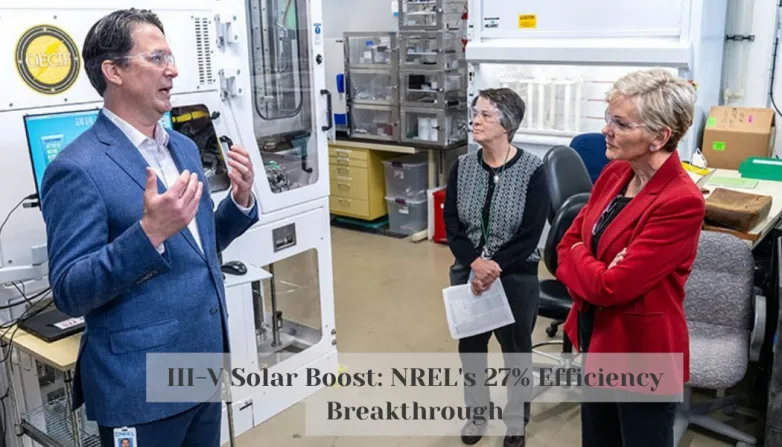III-V Solar Boost: NREL's 27% Efficiency Breakthrough
- Revolutionary record-breaking efficiency of 27% achieved in GaAs heterojunction solar cell by scientists at NREL. Combining computational and experimental methods to optimize doping and bandgap reduced the effects of defects. This breakthrough is applicable to multiple materials and levels of defect concentrations.

Scientists at the National Renewable Energy Laboratory (NREL) have achieved a record-breaking efficiency of 27% in a gallium arsenide (GaAs) heterojunction solar cell using dynamic hydride vapor phase epitaxy (D-HVPE). This was achieved by combining computational and experimental methods to optimize doping and bandgap of the “emitter” device layer to reduce defects’ impact on efficiency. The concept of heterojunctions is widely recognized, however, the practical demonstrations are limited. To address this, NREL researchers conducted simulations to assess the impact of varying the parameters on device efficiency. Subsequently, they synthesized cells using these parameters and observed predicted efficiency improvements. A key finding was that the efficiency improvement scales with defect concentration, making the results applicable to materials beyond III-Vs and with different levels of defect concentrations.
What Impact did NREL Scientists Have on GaAs Heterojunction Solar Cells?
- NREL scientists achieved a record-breaking efficiency of 27% in a gallium arsenide (GaAs) heterojunction solar cell.
- Scientists combined computational and experimental methods to optimize doping and bandgap of the “emitter” device layer to reduce defects’ impact on efficiency.
- Simulations conducted by the NREL researchers showed that efficiency improvement scales with defect concentration, making the results applicable to materials beyond III-Vs and with different levels of defect concentrations.
- The record-breaking efficiency advances the practical demonstrations of heterojunction solar cells.
- The research done by the NREL scientists shows that significant efficiency improvements can be achieved by optimizing the doping and bandgap parameters of the “emitter” device layer.
Also read


